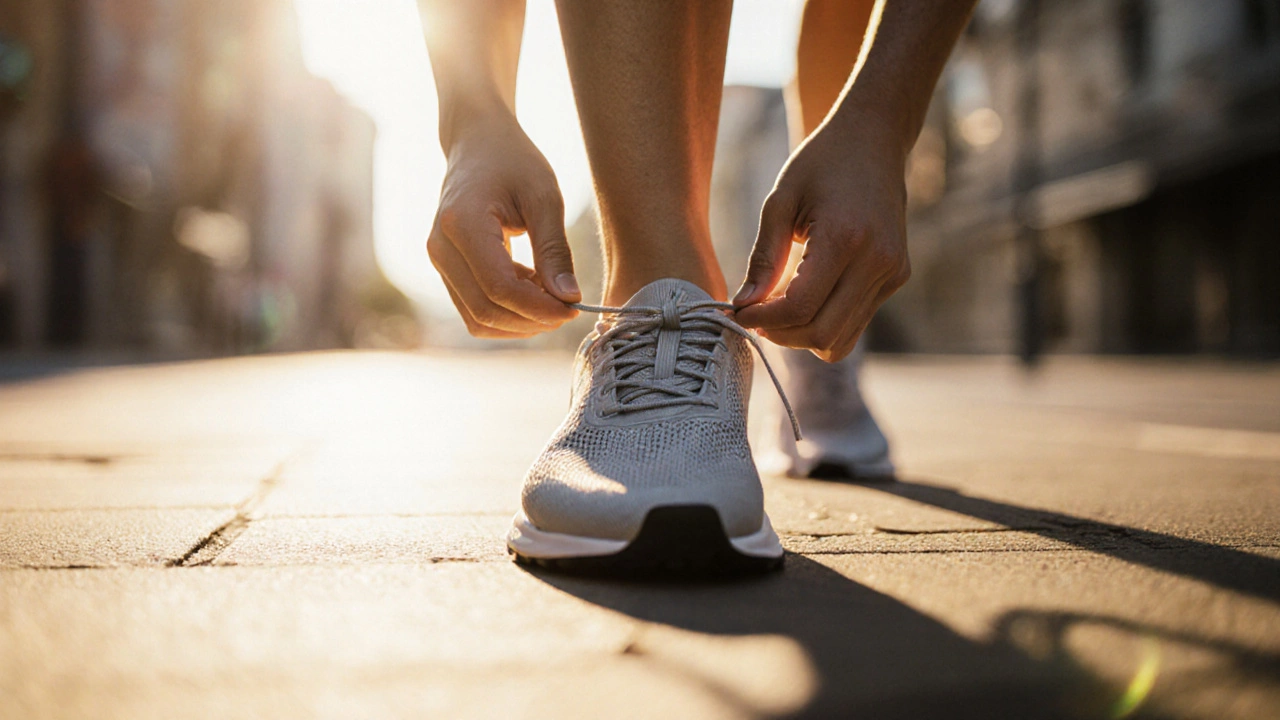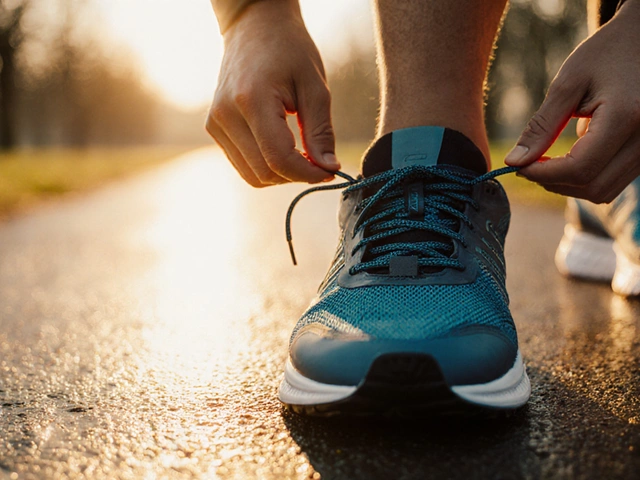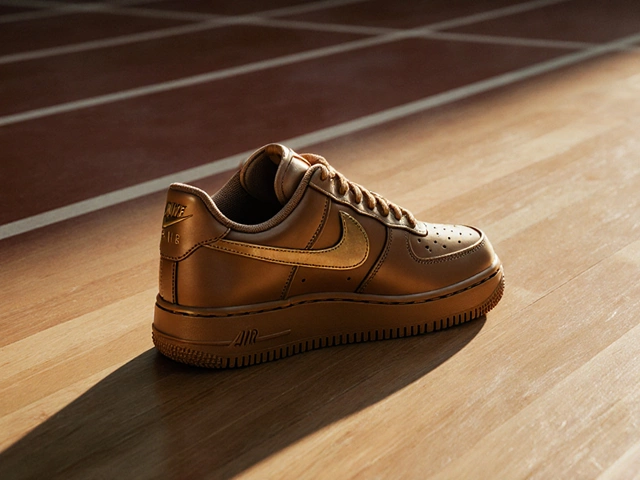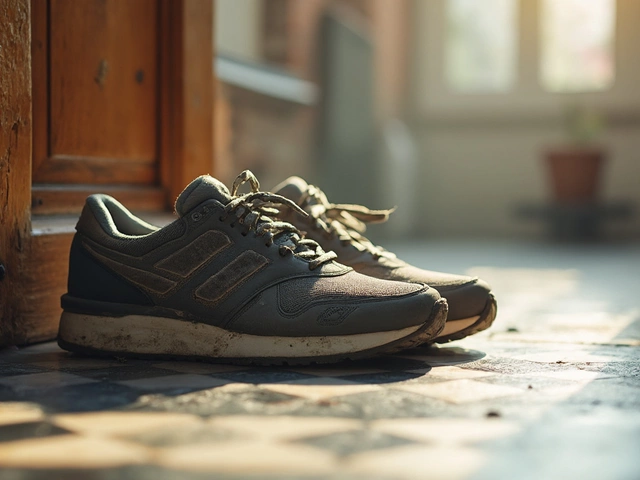Flat vs Cushioned Running Shoes: Which Is Right for You?

Flat vs Cushioned Running Shoes Quiz
Your Recommendation
Shoe Drop Comparison
The drop refers to the height difference between the heel and forefoot of a shoe:
| Shoe Type | Drop Range (mm) | Midsole Characteristics |
|---|---|---|
| Flat | 0–4 mm | Thin, flexible |
| Cushioned | 8–12 mm | Thick, responsive |
Quick Takeaways
- Flat shoes have low or zero drop and minimal cushioning, favoring a natural foot motion.
- Cushioned shoes provide higher drop and thick midsoles to absorb impact, ideal for heel‑strike runners.
- Match shoe type to your dominant foot‑strike pattern, injury history, and training goals.
- Transition slowly-mix in short runs and use a gradual mileage increase.
- Check fit, stack height, and flexibility before you buy.
Deciding whether running shoes should be flat or cushioned feels like a debate that never ends. One side screams "run like you’re barefoot," while the other promises "soft landing every step." The truth lies in how your foot moves, what you train for, and how you handle change. Below we break down the science, list the pros and cons, and give a step‑by‑step method to pick the perfect pair.
Running shoes are footwear designed specifically for forward locomotion, featuring a treaded outsole, shock‑absorbing midsole, and a supportive upper. Within this broad category two sub‑styles dominate the market: flat (often called minimalist) and cushioned (often called maximalist). Understanding the anatomy of each helps you see why they affect your stride differently.
Key Anatomy: What Makes a Shoe Flat or Cushioned?
Flat shoe is a running shoe with a heel‑to‑toe drop of 0-4mm and a thin, flexible midsole that mimics the feeling of barefoot running. The defining element is the shoe drop (the height difference between heel and forefoot), which influences how much the heel lifts during each step.
Cushioned shoe is a running shoe with a higher drop (usually 8‑12mm) and a thick, responsive midsole that absorbs impact forces. Its bulkier midsole (the foam layer between outsole and upper that provides shock absorption) creates a softer landing, especially for heel strike.
The outsole (the rubber sole that contacts the ground) also varies: flat shoes often use a thin, flexible outsole for ground feel, while cushioned shoes use a thicker rubber for durability and extra cushioning.
How Your Foot‑Strike Pattern Guides the Choice
Runners naturally fall into two major strike types: heel strike (landing first on the heel, common in recreational runners) and forefoot strike (landing on the ball of the foot, typical for sprinters and many minimalist runners). A hybrid “midfoot strike” sits between the two.
Heel strikers benefit from the extra cushioning that reduces the impact shock traveling up the leg. Flat shoes, lacking that cushion, can increase stress on the knee and lower back for a heavy heel‑strike runner.
Forefoot strikers, on the other hand, rely on the foot’s natural spring. Too much cushioning can blunt proprioception and encourage over‑pronation, leading to calf or Achilles issues. Flat shoes allow a more natural roll‑forward and can improve running efficiency.
Pros and Cons of Flat Shoes
- Pros
- Better ground feel improves foot‑muscle activation.
- Lower stack height promotes a shorter, quicker cadence.
- Lightweight design reduces fatigue on long runs.
- Cons
- Less shock absorption can aggravate existing knee or hip pain.
- Transition period is crucial-muscles need time to adapt.
- Not ideal for marathon training on hard pavement if you’re a heavy heel striker.
Pros and Cons of Cushioned Shoes
- Pros
- High impact protection reduces joint stress.
- Built‑in stability features help control pronation.
- Comfortable for long‑distance runs on concrete or asphalt.
- Cons
- Heavier weight can affect speed workouts.
- Excessive cushioning may reduce proprioception, leading to a less efficient stride.
- Higher stack height can promote a rear‑foot landing even if you want to change.
Side‑by‑Side Comparison
| Feature | Flat Shoe | Cushioned Shoe |
|---|---|---|
| Drop (mm) | 0-4 | 8-12 |
| Midsole Thickness | Thin, flexible | Thick, responsive |
| Ideal Strike | Forefoot / Midfoot | Heel / Midfoot |
| Weight (grams) | 200-260 (men’s 10km) | 260-340 (men’s 10km) |
| Typical Price (USD) | $80-$150 | $120-$250 |
| Pros | Natural feel, lighter, promotes quicker cadence | High shock absorption, stability, comfort for long runs |
| Cons | Less cushioning, higher injury risk for heel strikers | Heavier, can mask foot mechanics, may encourage heel striking |
How to Test the Fit Before You Buy
- Stand barefoot on a flat surface. Note the natural width of your foot (narrow, medium, wide).
- Slide your foot into the shoe. There should be a thumb’s width of space from the tip of your longest toe to the front of the toe box.
- Check the heel cup: it should hold the heel snugly without slipping during a brisk walk.
- Flex the forefoot. A flat shoe should bend easily at the ball of the foot; a cushioned shoe will feel stiffer but should still rock.
- Do a short treadmill run or jog in‑store (if available). Focus on how the shoe feels at the point of impact.
Remember, a shoe that feels perfect on a 5‑minute jog may still need a transition period before a 10‑km run.
Transitioning Safely from One Style to the Other
Switching from cushioned to flat (or vice‑versa) isn’t just a matter of swapping shoes. Your muscles, tendons, and even bone density need time to adapt.
- Start with 10‑15 minutes of easy running per session, three times a week.
- Gradually increase the duration by 10% each week while monitoring soreness.
- Include strengthening drills: calf raises for flat shoes, glute bridges for cushioned shoes.
- Log any new aches; if pain persists beyond a week, reconsider the switch.
Buying Checklist - What to Look For
- Identify your dominant strike (heel, midfoot, forefoot).
- Pick a drop that matches your strike: low drop for forefoot, higher drop for heel.
- Check midsole material-EVA for cushioning, TPU or carbon‑fiber plates for responsiveness.
- Ensure the toe box accommodates your foot width without compression.
- Verify the outsole pattern suits your terrain (smooth rubber for road, patterned for trail).
- Try the shoes on late‑day when feet are slightly swollen; this gives a realistic fit.
Final Thoughts
There’s no universal answer-flat shoes empower a natural gait, while cushioned shoes shield you from impact. The sweet spot is choosing a model that aligns with your strike, training volume, and any past injuries. Test, transition slowly, and listen to your body. When you get the right pair, you’ll notice smoother strides, fewer aches, and maybe even a faster time.
Frequently Asked Questions
Do flat shoes cause more injuries?
Flat shoes can increase stress on the knees and hips for runners who land heavily on the heel. The key is to ensure you’re a forefoot or midfoot striker and to transition gradually. Proper strength training also mitigates injury risk.
Can I wear cushioned shoes for speed workouts?
Yes, but choose a lighter, responsive cushioning (often labeled “travel” or “racing”). Heavy, plush models can slow turnover. Many elite runners use a lighter cushion for intervals and a plush shoe for long runs.
What drop is best for a neutral runner?
Neutral runners often thrive with a moderate drop of 6-8mm, striking a balance between impact protection and natural foot motion. However, personal comfort ultimately decides the ideal number.
How often should I replace my running shoes?
Most experts recommend swapping out shoes every 300-500miles (480-800km). Watch the midsole compression and outsole wear; if you feel new aches, it’s time for a fresh pair.
Do I need different shoes for road vs trail?
Road shoes prioritize cushioning and smooth outsoles, while trail shoes add aggressive tread and rock plates for protection. Using the right pair reduces slip risk and improves comfort on varying surfaces.



